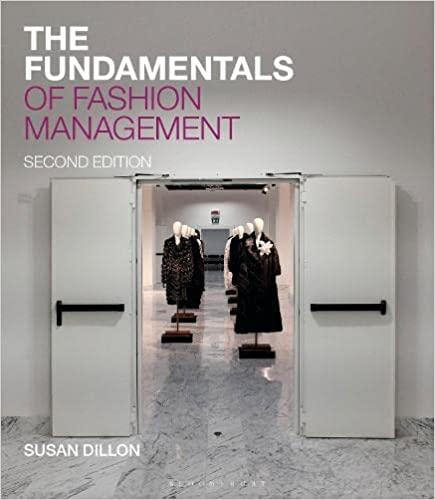Question
You are on the executive team of a medium-sized Australia-based company specialising in designing and manufacturing electric motors used by large multinational firms such as
You are on the executive team of a medium-sized Australia-based company specialising in designing and manufacturing electric motors used by large multinational firms such as Dyson and LG to make home electrical appliances such as hair dryers, air purifiers, and vacuum cleaners. The company has a good reputation of continuously investing in its technological expertise in designing high quality new generations of electric motors that are smaller, lighter, and more power-efficient than electric motors produced by many competitors. Until now, the company conducts almost the entire value chain from R&D to manufacturing in Australia and then export the products to more than 20 countries in Asia, Europe, and North America. The companys major customers include global brand names such as Black & Decker, Dyson, LG, Mitsubishi Electric, as well as some local home appliances manufacturers in Asia and Europe.
A major issue under discussion is whether the company should consider moving the manufacturing to a developing country such as Vietnam, where the costs of labour are much lower. The company however has no prior experience in running overseas business operations through foreign direct investment (FDI).
Assuming a decision (good or bad) was made in the recent executive meeting that the company should move manufacturing to a developing country (using Vietnam as an example), and due to the lack of capital and experience in managing FDI overseas, the company ruled out the strategy of FDI. Further assuming the company has found an electric motor manufacturer in Vietnam as a potential business partner, there are three options left on the table:
[a] The Australian company can approach the Vietnamese company to negotiate a pure market-based contract for collaboration, which would require the Australian company to provide the Vietnamese company with the necessary technologies and the Vietnamese company need to produce small electric motors made from such technologies. The two companies will share the profits (or losses) based on the terms and conditions stipulated in such a contract.
[b] The Australian company can try to negotiate an OEM (original equipment manufacturing) agreement with the Vietnamese company. Such an OEM agreement would allow the Vietnamese company to use the Australian companys technologies to produce electric motors in Vietnam and then the Australian company will buy back all finished products and re-sell around the world under the Australian companys own brand.
[c] The Australian company can try to negotiate a licensing agreement with the Vietnamese company. In such an agreement, the Vietnamese company will be allowed to use the Australian companys technologies to produce and sell products in new markets for profits, while the Australian company will receive a royalty fee every year during the licensing agreement (and it is also possible to re-negotiate the royalty fee every year after the initial agreement) without the need to develop new overseas markets by themselves.
Which of the above three strategies is most likely to be implemented through successful negotiation between the Australian and the Vietnam companies? And why?
Step by Step Solution
There are 3 Steps involved in it
Step: 1

Get Instant Access to Expert-Tailored Solutions
See step-by-step solutions with expert insights and AI powered tools for academic success
Step: 2

Step: 3

Ace Your Homework with AI
Get the answers you need in no time with our AI-driven, step-by-step assistance
Get Started


